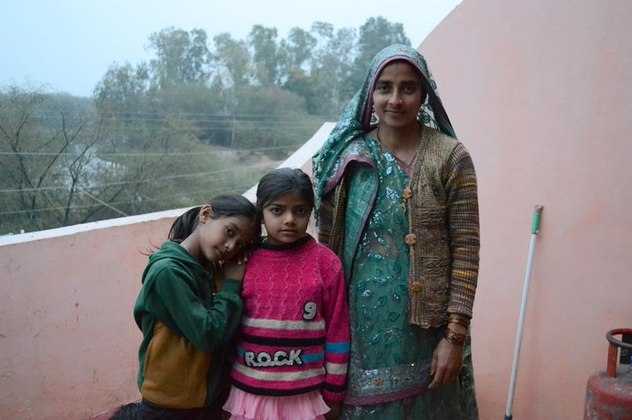A new report from The Climate Group and Goldman Sachs,The Business Case for Off-Grid Energy in India, makes the case for off-grid energy businesses in India.
India’s Prime Minister Modi hasset the goal of harnessing solar in order to provide every household in India with at least one light bulb by 2019. There is reason to believe that basic energy for all is a feasible goal for India within this decade, but it will require some changes; business-as-usual won’t deliver the desired results.
The approximate number of households in India without access to the grid is currently 360 million people, and another 95 million people are considered under electrified. As thenew report from The Climate Group and Goldman Sachs points out, while grid extension is expected to expand in coming years, population growth and the fact that the vast majority of India’s unelectrified population lives in rural areas -- where it is costly and challenging to extend the grid -- means that, with business-as-usual approaches to electrification, the number of unelectrified people living in India in 2024 would be quite similar to that number today. The report cites projections suggesting a mere five percent reduction in the number of unelectrified households in India over the next 10 years, assuming a business-as-usual approach.

Business-as-usual approaches won’t bring electricity to India’s unelectrified population on a reasonable timescale. Photo courtesy of Vrinda Manglik.
But, here’s the thing. Business-as-usual is not the only way to work toward electrification. Business-as-usual means extending the grid, but off-grid solar companies -- like the ones we featured inour video about clean energy access in India -- are putting power into people’s hands today and are ready to scale up their efforts, given a favorable regulatory environment and access to large-scale commercial debt.
Thereport from The Climate Group and Goldman Sachs looks at what off-grid enterprises need in order to succeed in India, identifies promising business models, and recommends catalytic investments for the sector – driving home the point that what companies need most at this point is debt. Within the category of off-grid energy businesses operating in India, the report focuses on solar home system (SHS) enterprises (e.g. Selco, Barefoot Power, and Simpa Networks) and decentralized renewable energy (DRE) enterprises (e.g. OMC Power, Mera Gao Power, Husk Power Systems).
The report estimates the market size of the SHS space in India to reach US$200-250 million by 2018, and for the market size of the DRE space in India to reach US$150 million by 2018. The two types of enterprises have projected annual growth rates as high as 400 percent (for SHS enterprises) and 250 percent (for DRE enterprises).
According to the report, the Indian government has said that US$250 billion will be needed over the next five years to reach more off-grid households in the context of population growth. They note that US$100 billion of that should be invested in clean energy over the next five years, and 90 percent of annual investment will need to come from the private sector. To date, barriers to large-scale commercial investment have included restrictions around how foreign loans can be used and insufficient data on the sector (something which companies like Angaza arehelping to revolutionize).
Beyond just creating a favorable environment for investing, government policy has a significant role to play in shaping how clean energy gets deployed. For example,the report points out that solar is currently more prevalent in India than other forms of clean energy because it is favored by current regulations. There is also a mandate by the Government of India requiring 50 percent of rural cell phone towers to use renewable energy.
This could potentially lead to significant revenues for off-grid companies such as OMC Power who can recover costs more easily by serving “anchor clients” like cell phone towers and ultimately have less risk to their bottom line when serving rural households.

OMC Power uses rural cell towers as anchor clients. Photo courtesy of Vrinda Manglik.
It is an exciting time for off-grid renewable energy in India, and this report does a great job laying out what is needed for off-grid energy to reach even more unelectrified households. Thanks in large part to Indian Prime Minister Narendra Modi’sambitious solar goals, India’s solar sector has been receiving some major investments and attention lately. SunEdison is working with OMC Power to install a cumulative 250 megawatts of off-grid power in 5,000 villages and alsoannounced plans to invest $4 billion to build a large solar panel factory in India. Additionally, during his January visit, President Obama indicated that the U.S. would provide financial support for India’s solar goals.
As we noted inour call for a “Power India” initiative, consolidated U.S. support could help put Prime Minister Modi on track to meet his solar for all ambitions, opening the door to commercial debt by de-risking investments.